In the biting cold of Korean winter, warmth comes not only from scarves and gloves, but also from the enticing aroma of street food wafting through the air, reminding us of a simple joy of the season, which is enjoying delicious food amidst the cold breeze.
The Korea Times has listed five Korean delicacies that will warm your heart with every bite, guided by the sweet and savory aromas from small kitchens, as you wander the chilly streets of Seoul.
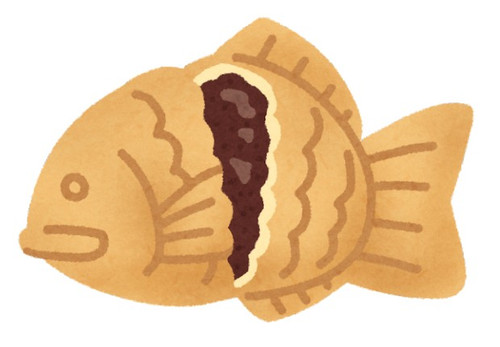
Bungeoppang: Red bean fish shaped cake
"Bungeoppang" is a traditional sweet red bean fish-shaped pancake that is a popular winter street food in Korea. From its original traditional red bean filling, bungeoppang today has a variety of fillings, from custard and sweet potato to kimchi and pizza.
The 2011 book "Bungeoppang Has a Family Tree" explores the origins of bungeoppang, which literally means "fish cake" in Korean.
This dish is considered a fusion of Eastern and Western cuisine . Inspired by Western waffles, the Japanese transformed it into "taiyaki," a fish-shaped sweet filled with red bean paste, in the 18th century.
This development continued when sea bream-shaped taiyaki transformed into carp-shaped bungeoppang in Korea. During the period 1910-45, taiyaki was introduced to Korea and eventually evolved into bungeoppang, characterized by red bean paste filling from head to tail.
The advent of wheat flour after the 1950-1953 Korean War made bungeoppang even more popular.
Bungeoppang was once a cheap and convenient street food for the working class during Korea's rapid industrialization in the 1960s and 1970s. The popularity of bungeoppang waned as living standards improved, but it made a resurgence during the economic downturn in the late 1990s.
For many years, bungeoppang were traditionally sold for “2,000 won ($1.4) for 3 pieces.” However, some street vendors, especially in downtown Seoul, are now selling them for 1,000 won each.
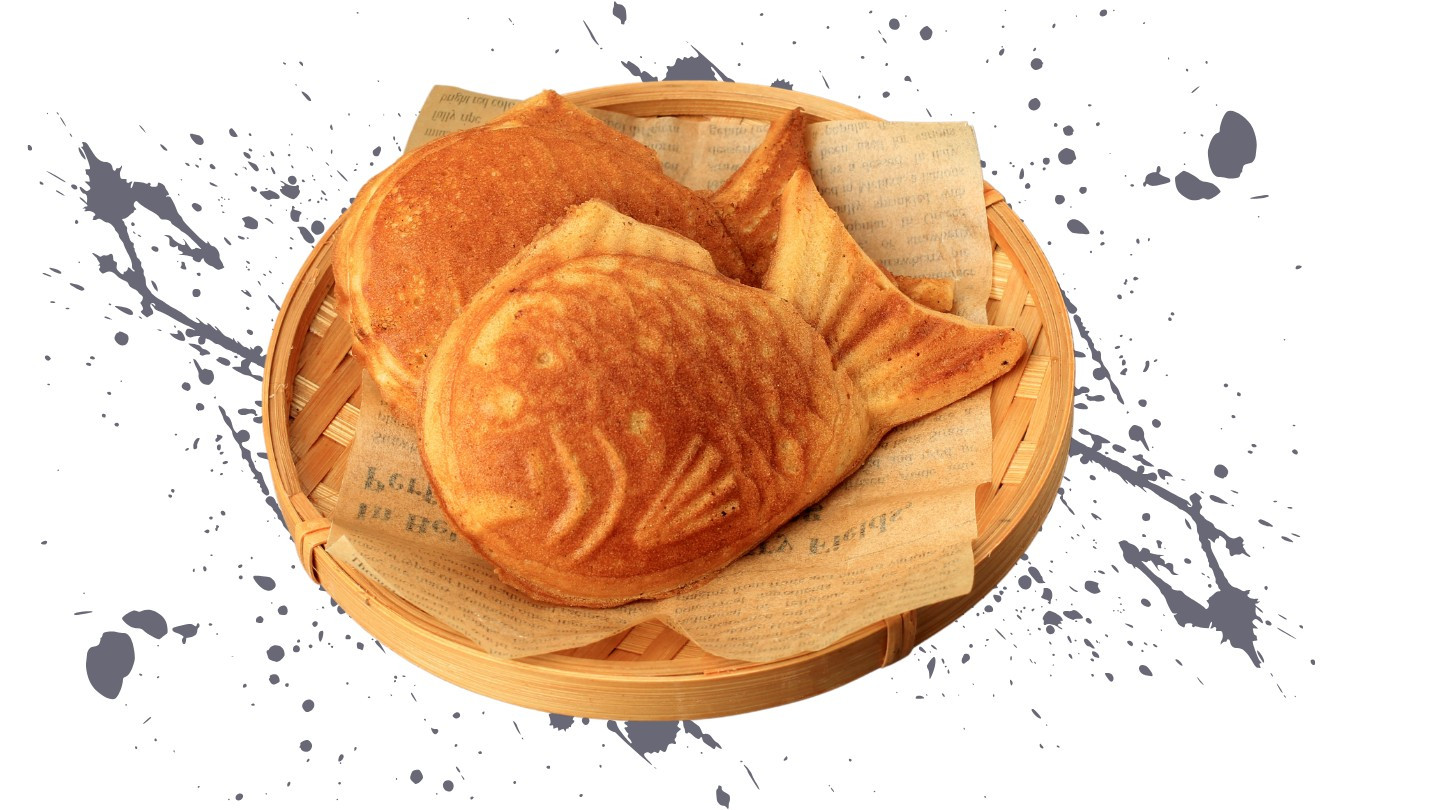
The constant rise in raw material and labor costs has not only increased prices, but also caused the number of bungeoppang street vendors to decline. This has led to many Koreans having difficulty finding their favorite dish, leading to the creation of the term “bungsegwon” (bungeoppang area), and even a bungeoppang map, which provides up-to-date information on where this beloved street food can still be found.
Among these, Chonggakne Bungeoppang is a must-visit for anyone looking to enjoy the best bungeoppang at Gwangjang Market, downtown Seoul.
Located at Gwangjang Market South Gate 1, near Jongno-5-ga Station on Seoul Subway Line 1, this stall is famous for its long lines of people waiting to get their hands on the buns. Their signature red bean bungeoppang is filled with walnuts and has a unique crunchy taste. There is also a savory bungeoppang pizza and a sweet combination of sweet potato and cream cheese. The buns with red bean and custard cream cost 1,500 won, while the others are 2,000 won.
There is also “Ingeoppang,” or carp cake in Korean, a variation of bungeoppang with a chewier texture due to the addition of glutinous rice flour, sold at Namyeongyeok Ingeoppang in Yongsan District, Seoul.
Namyeongyeok Ingeoppang, located near Exit 1 of Namyeong Station on Seoul Subway Line 1, is a local favorite, especially for customers who love red bean paste. The shop's "Ingeoppang" is almost all filling and has very little crust, so much so that customers even joke that the crust is just for decoration.
This stall sells three for 2,000 won. However, due to high demand, each person is limited to six.

Hotteok: crispy pancake with filling
On the chilly streets of Korean winter, the sizzling sound of hot oil and the rhythmic flipping motion of street vendors make "hotteok" an irresistible snack.
Even the act of making hotteok is a spectacular sight to behold. The vendor will skillfully “pinch” a ball of extremely soft and elastic dough, add seasonings and fillings, roll it into a ball and place it on a flat pan, then use a tool to deftly flatten it, then flip it over, and a crispy golden cake will appear.
The crunchy cereal combined with the chewy sweet filling makes hotteok a favorite among locals and tourists alike.
The name hotteok combines "ho," which refers to people from Central Asia and the Arabian regions, with "tteok," which means rice cake, reflecting its origins outside of Korea. According to the Korean Heritage Administration (KHS), it is believed that rice cakes were brought to Korea along the Silk Road.
The exact time when hotteok first appeared and became popular in Korea is unclear, but KHS estimates that it appeared in the late 19th century when merchants from China's Qing Dynasty came to Joseon.
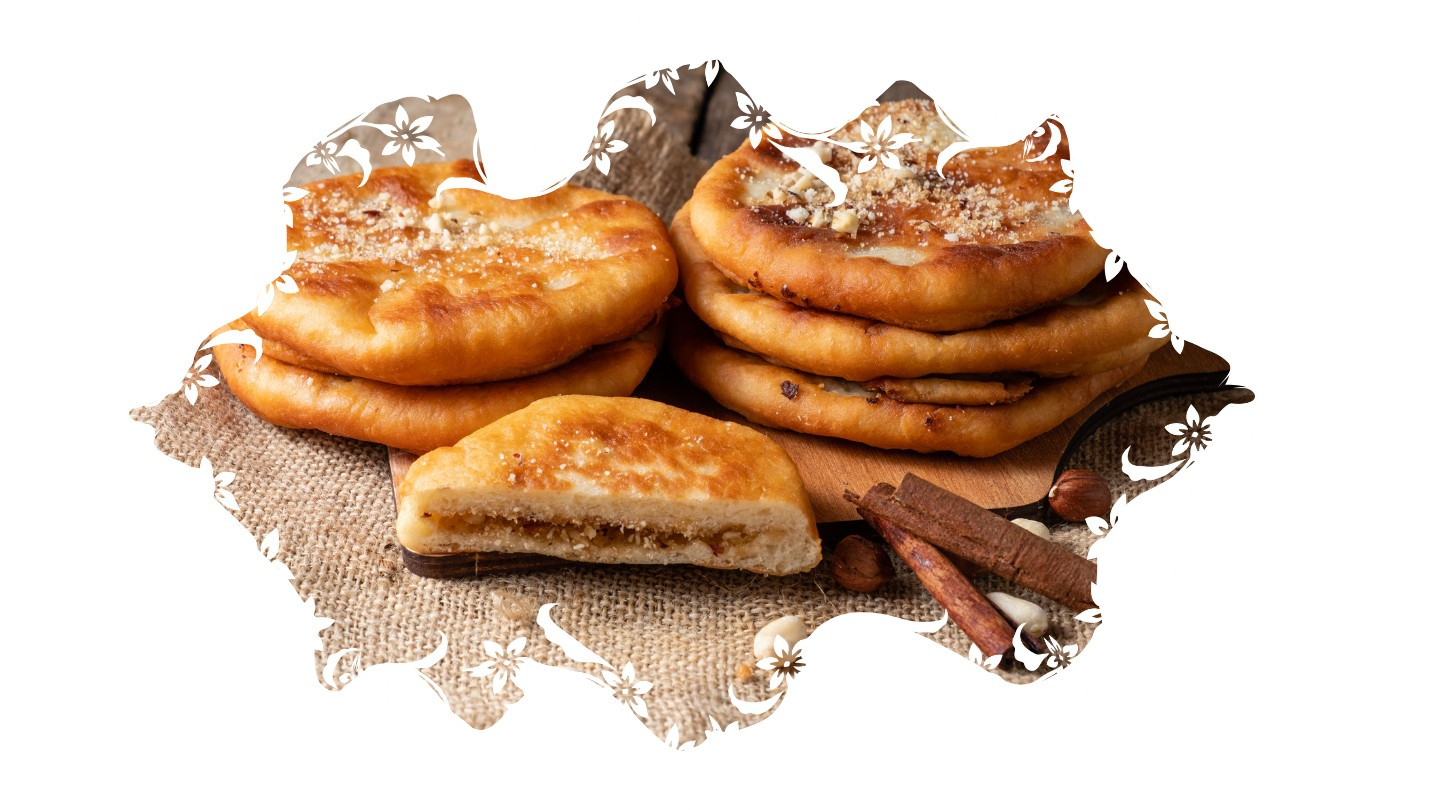
After the fall of the Qing Dynasty, some of these merchants chose to stay, opening restaurants and selling "mandu" (dumplings) and hotteok to make a living. Over time, these items gradually became popular among Koreans, gaining an important place in the local culinary culture with many variations to suit Korean tastes.
In popular tourist spots — from Seoul's Insa-dong, famous for its traditional shops, and Namdaemun Market, the country's largest traditional market, to Busan's Gukje Market and Jungang Market in Sokcho, Gangwon Province — hotteok stalls are a popular sight.
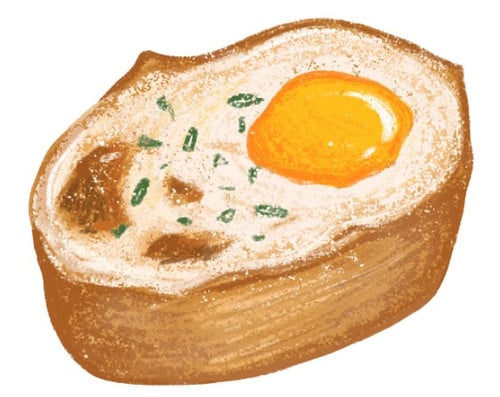
Gyeranppang: Warm, spongy egg cake
"Gyeranppang" or Korean egg cakes are one of the favorite snacks for those who love rich and soft cakes.
The dish is essentially a hard-boiled egg on top of a soft, spongy wheat pancake. It is said to have started in a small shop near Inha University in Incheon in 1984.
This shop has been a popular spot for college students for 40 years, selling small, affordable snacks. Initially, the shop sold “pulppang” (bread stuffed with red beans). However, the owner later came up with an egg substitute when he encountered customers who did not eat red beans.
This sweet and savory hybrid cake grew in popularity and eventually became one of Korea's most popular street snacks, with prominent stores located at locations such as near Exit 8 of Sillim Station on Seoul Subway Line 2 or at Exit 10 of Sinseol-dong Station on Seoul Subway Line 1.
Right on an alley near Sookmyung Women's University in Yongsan District, central Seoul, With Egg Bread offers a variety of egg breads, offering a healthier option.
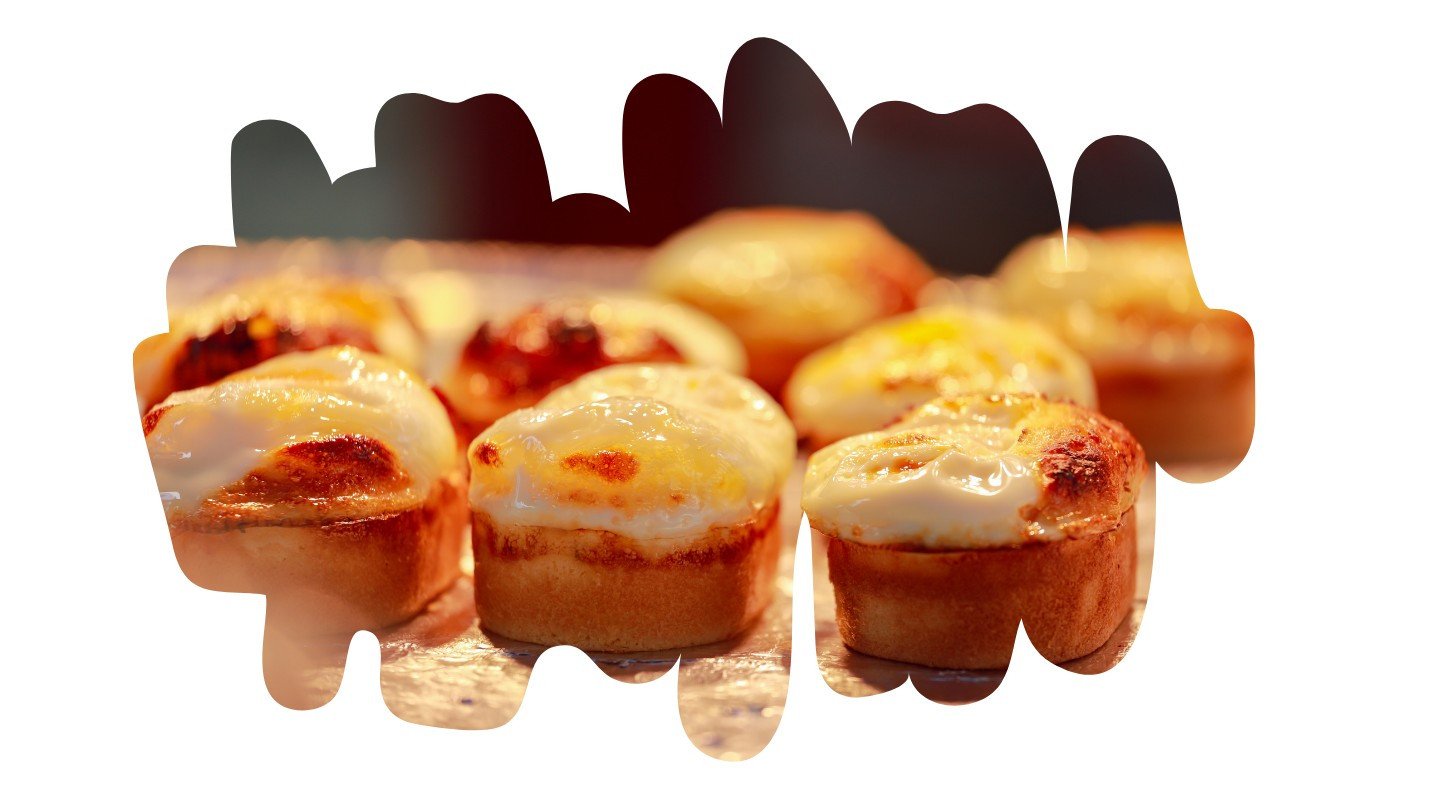
The cafe adds flavorful toppings like mayonnaise, ham, tomato, and cheese to spice up the original simple egg sandwich. Some of the popular variations include the egg sandwich with olives and chilli sauce, which gives it a familiar pizza-like taste, and a variation with mayonnaise, ham, and onions, for those who want to add a richness.
For those looking for a more upscale egg waffle with a premium flavor, Egg Seoul is the place to go. Located near Gangnam-gu Office Station on Seoul Subway Line 7, this cafe offers a modern take on the egg waffle with savory toppings including sausage, scallions with cream cheese and pepperoni, as well as dessert-style options like sweet corn, red bean and avocado, and Shine Muscat grapes.
Along with the traditional egg tart, the shop's signature is an egg-shaped pastry filled with cream cheese and cheddar cheese. The menu also offers variations like red bean and matcha or pistachio and chocolate.
Although egg waffles are recognized as one of the most popular street snacks in Korea, they are not widely available. However, you can easily make egg waffles at home with simple ingredients and a microwave or air fryer.
The recipe uses store-bought pancake mix, adding water or milk according to the package instructions to make a mixture. Grease a disposable paper cup and fill it about two-thirds full with the batter. Place an egg on top of the batter, then microwave for about five minutes or until fully cooked. An air fryer can be used instead of a microwave to cook at 180 degrees for 10 to 15 minutes.
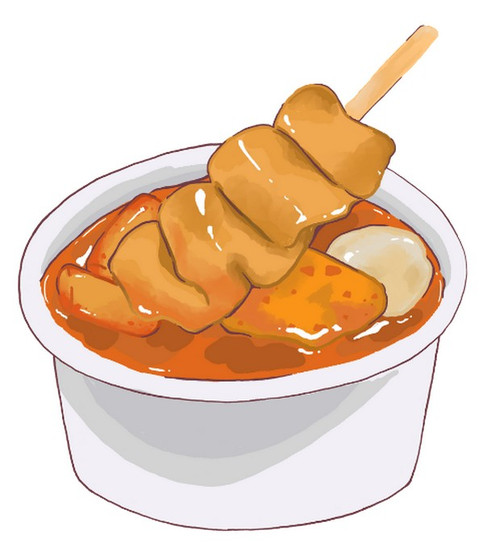
Eomuk: Perfect Fish Cake Skewers for Winter
As temperatures drop in Korea, the streets come alive with the pleasant aroma of steaming broth and the sight of fish cakes skewered on food carts boiling.
In Korea, fish cakes are called "eomuk" or "odeng," and this beloved winter street snack is not only a heartwarming dish but also steeped in history and culture.
Essentially, eomuk is a savory dish made by grinding fish - usually white fish such as cod, pollock, snapper or halibut - into a smooth paste, mixing it with flour and spices and pressing it into rectangular or circular pieces.
These eomuk are skewered on sticks and then cooked in a rich, often slightly spicy, broth that is always piping hot and comes with a small paper cup filled with the rich soup.
The combination of soft fish cakes and warm broth that fills your mouth with just one bite makes eomuk an extremely appealing dish when struggling with the cold of winter.
But why does it have two names—eomuk and odeng? While both terms mean “fish cake” in English, their differences lie in cultural and linguistic nuances.
Eomuk is a purely Korean term for fish cakes prepared in the traditional way. Odeng, on the other hand, is derived from the Japanese word “oden,” reflecting the historical influences that shaped the dish.
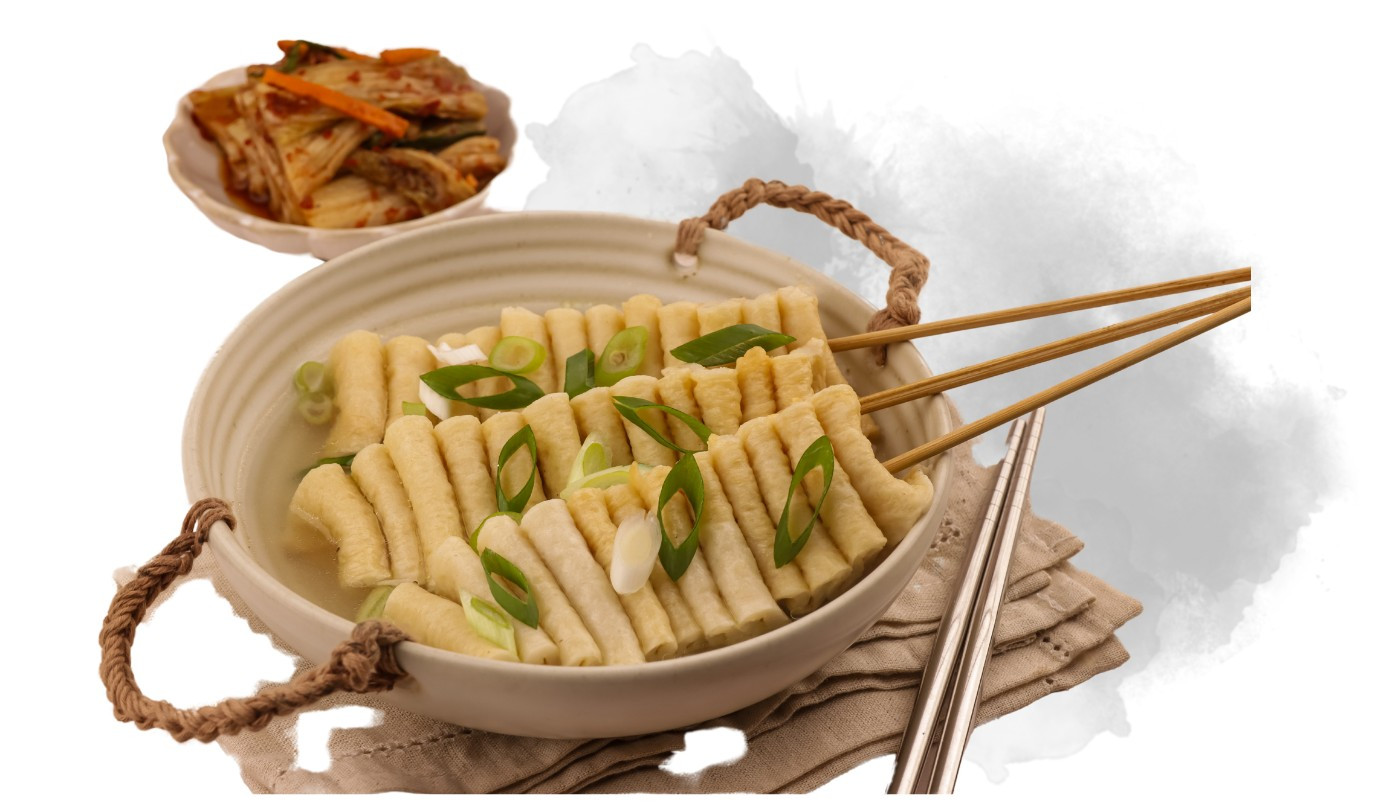
The origin of fish cakes can be traced back to ancient China, where chefs during the Qin Dynasty (221-206 BC) chopped fish into a paste to avoid unpleasant bones.
The technique spread throughout East Asia, inspiring variations such as Japan's "kamaboko" during the Heian period (794–1185) and Korea's "saengseon sukpyeon" during the Joseon period (1392–1910).
During 1910-1945, the Japanese introduced fish cake factories, especially in port cities like Busan. Over time, the dish developed into a local staple.
After the Korean War (1950-1953), during a period of scarcity and limited access to protein-rich foods, fish cakes became a popular and affordable source of nutrition for many Koreans.
Today, Busan remains the center of the Korean fish cake industry, renowned for its quality and variety.
Eomuk holds a special place in the hearts of Koreans, often enjoyed on the go or as part of a quick meal at busy roadside carts. Its portability makes it a popular snack.
Eomuk is very popular in traditional markets, where eomuk skewers are sold alongside other popular street snacks such as "tteokbokki" and "sundae" (stuffed sausages).
The Sindang-dong neighborhood in Jung District, central Seoul, has become a hot spot for eomuk and tteokbokki fans at a time when traditional street carts are becoming increasingly rare.
Sindang-dong's famous Tteokbokki Street retains its nostalgic feel with cozy outdoor stalls where visitors can enjoy steaming skewers of eomuk on chilly evenings.
For those looking for a more upscale eomuk experience, the nearby Euljiro neighborhood has bars where fish cakes are served alongside hot pots, including pre-cooked eomuk simmered to perfection. These bars also have tables spilling out onto the street, creating a mix of urban sophistication and street food charm, even if it means braving the winter chill.
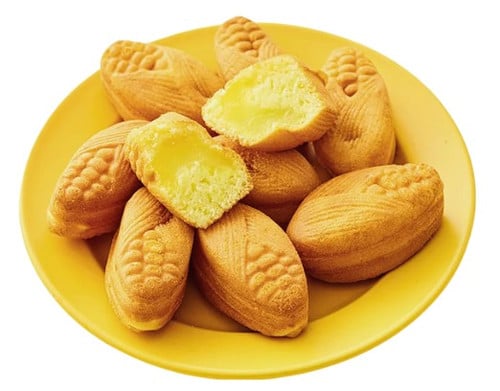
Deli Manjoo: Sweet custard filled pastry
At some Korean subway stations, near bus stops or at highway service areas, there is often a sweet, fatty aroma that permeates the air, making it irresistible to passengers.
This pleasant aroma often comes from the popular Deli Manjoo franchise, famous for its delicious corn-shaped sponge cakes filled with custard cream. Despite the rush to catch a train or bus, the enticing aroma of freshly baked Deli Manjoo often makes commuters want to stop by.
While the taste of Deli Manjoo is not always good, there is one place where the quality is always guaranteed. That is the first Deli Manjoo store, which has been operating since 1998 at Myeongdong Station on Seoul Subway Line 4. This store is famous for making all of its dough and fillings on-site to ensure the freshest Deli Manjoo.
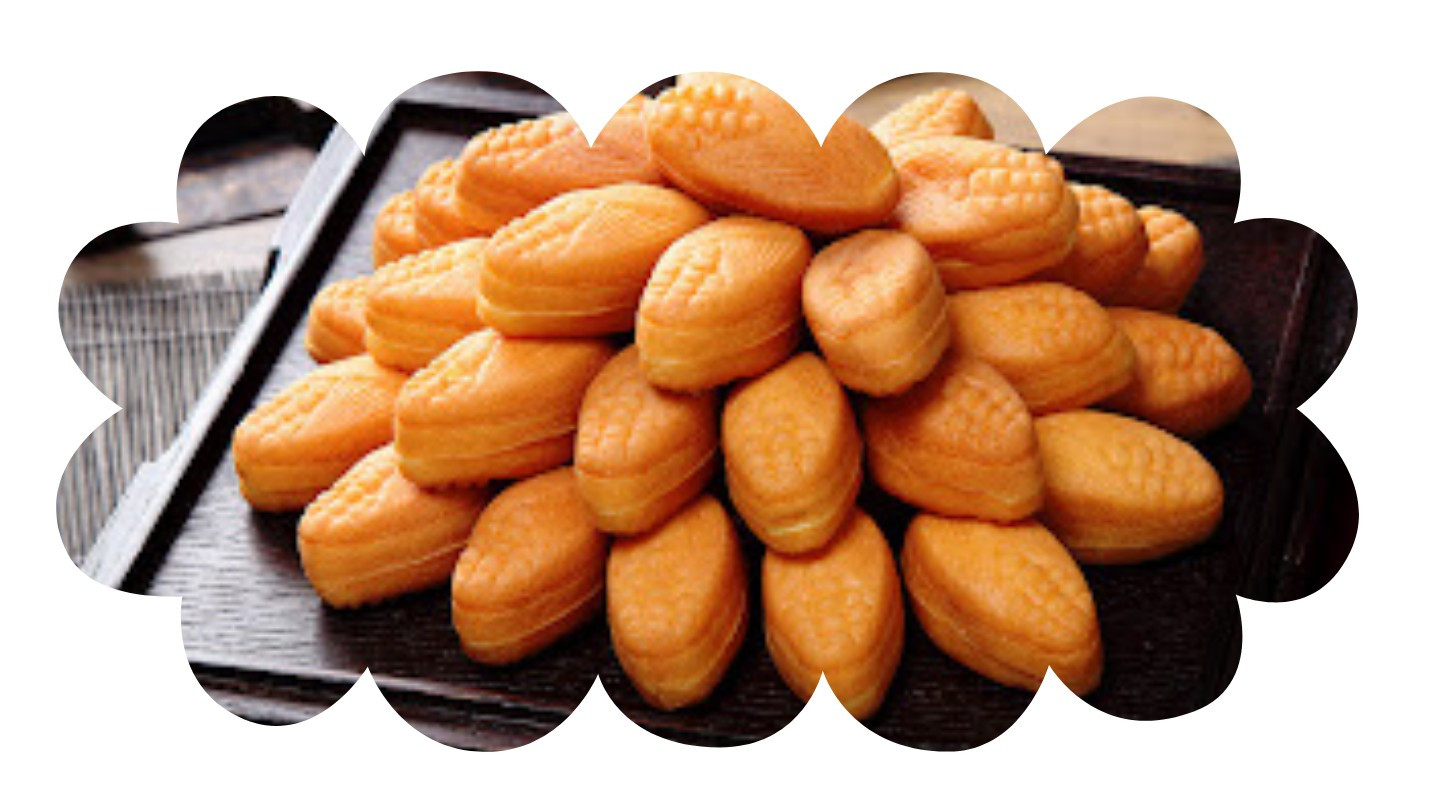
The store's reputation was further cemented earlier this year when it was featured on "Hangout with Yoo," a variety show hosted by top Korean entertainer Yoo Jae-suk.
The Myeongdong store's standout feature is its perfectly thin crust, which encases a generous amount of sweet, smooth custard, providing the perfect balance of flavor and texture. Most of Deli Manjoo's snacks are grilled to order, ensuring a fresh, piping hot snack – even with a "very hot" warning.
The cake is also delicious frozen. The frozen version has a unique texture and added sweetness, giving it a creamy feel./.

Source: https://www.vietnamplus.vn/5-mon-an-duong-pho-han-quoc-suoi-am-trai-tim-ban-trong-mua-dong-lanh-post1005808.vnp









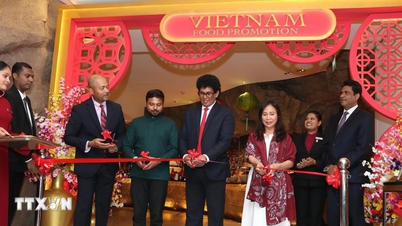


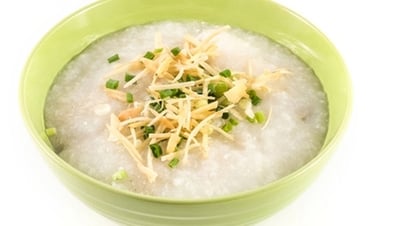

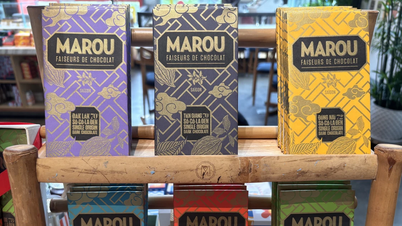
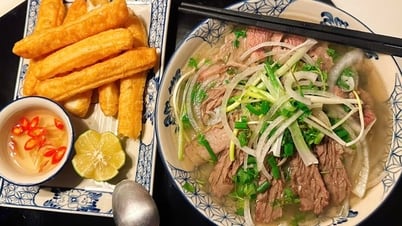
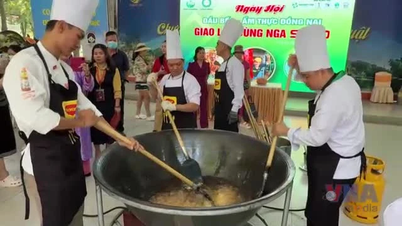






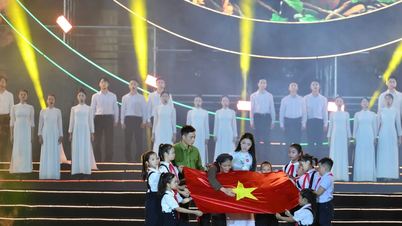



![[Photo] President Luong Cuong attends special political-artistic television show "Golden Opportunity"](https://vphoto.vietnam.vn/thumb/1200x675/vietnam/resource/IMAGE/2025/8/22/44ca13c28fa7476796f9aa3618ff74c4)




































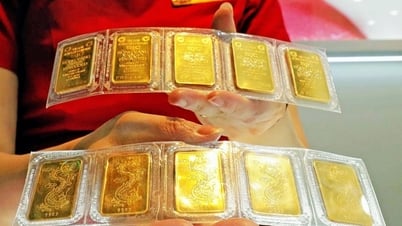
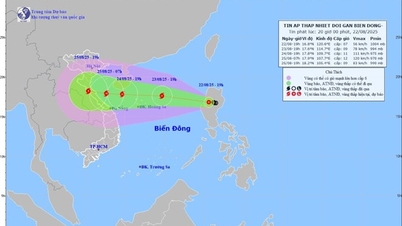

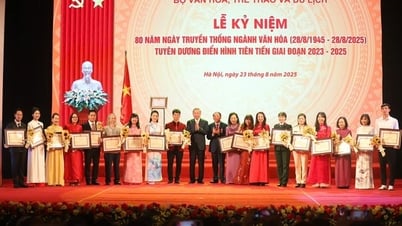



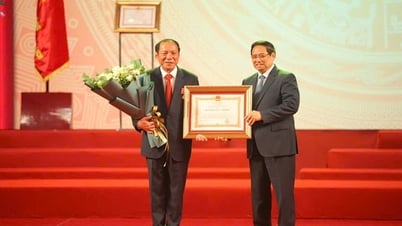





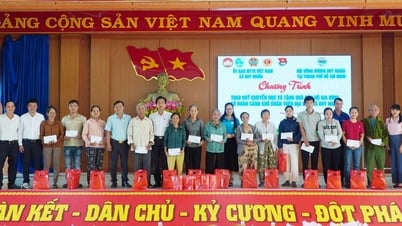



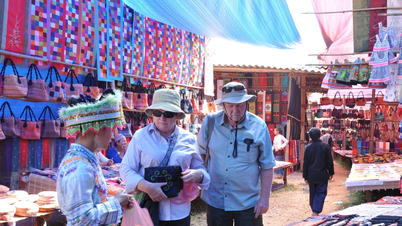


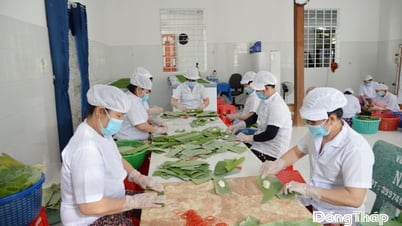




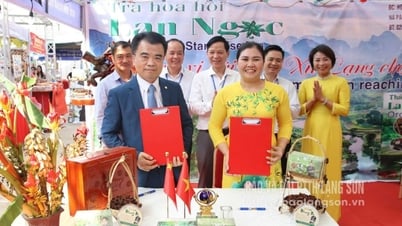

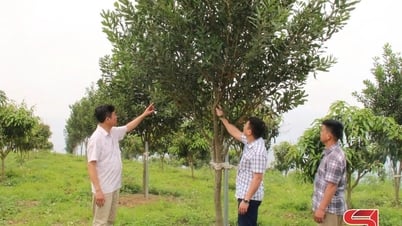






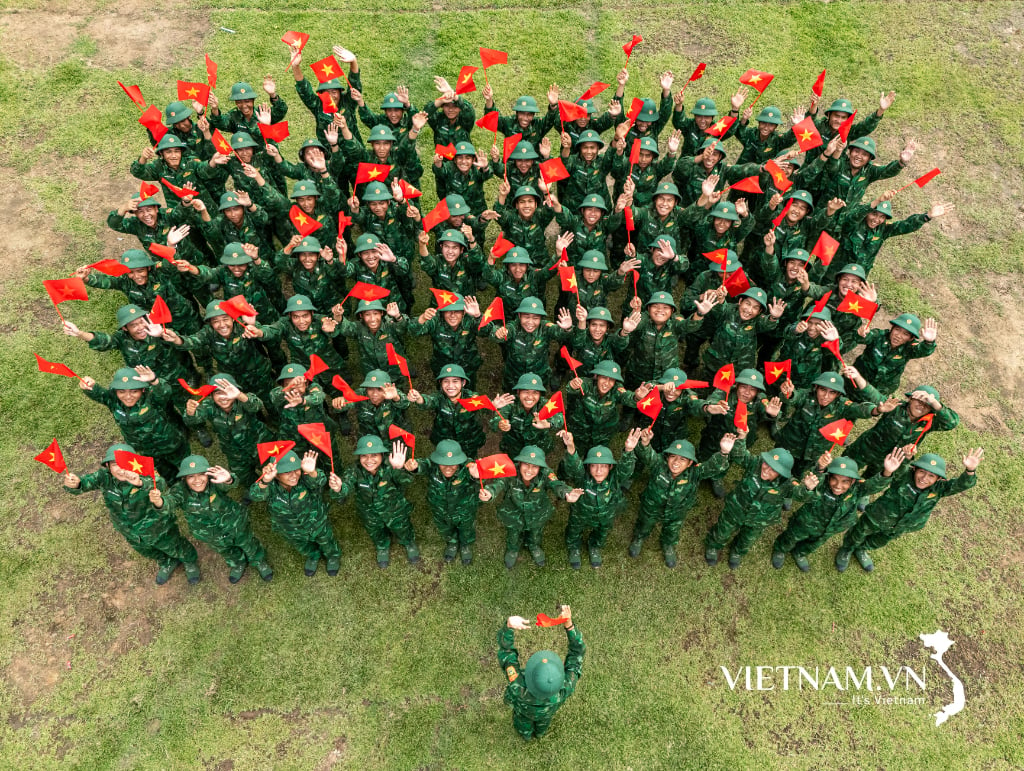
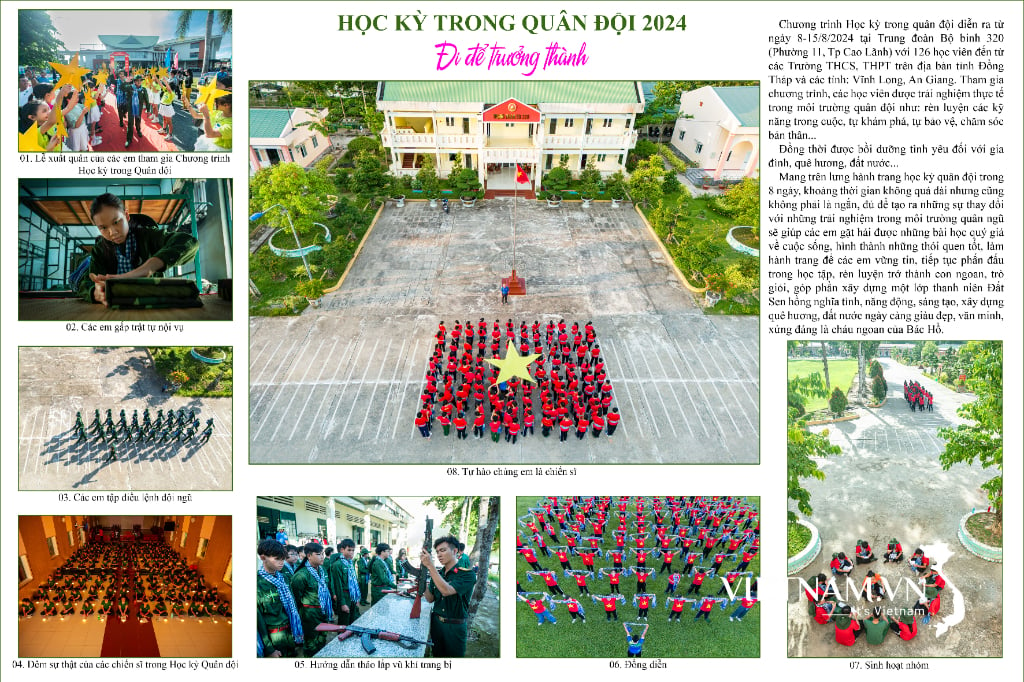
Comment (0)